Another Synthedit author... and this is a nice little polysynth VA type sounds plugin. There's 2 versions for download - one is 8 note & one is 4 note poly...
I quite like the sounds in the presets (comes with about 10) - styles on an old SH synth, it's a nice little freeware, does basses, leads, strings etc - Here's some info from the maker/creator:
OBERON is a classic analog polysynth that works best when you set your VST host program to 96 kHz sample rate. It has two special oscillators, two envelopes and a special 2-pole dualfilter. You might wonder do we need another VA synth (and I might too) but anyway, it's free so why not?
Oscillator section:
First oscillator is a TriSaw osc that is actually made of three saw waveforms. DETUNE affects each individual wave separately so that quite fat sound is achieved. Second oscillator is BiPulse that consist two pulse waves. First Oscillator can be synced with second one with FREE / SYNC selector. TriSaw oscillator has two modes that are selected with UNISON / TRI OCT selector. In unison mode all three saw waveforms are played at same pitch (detune has only small effect to the overall pitch, less than a seminote). In Tri Oct mode each saw wave is played at different octave so that if the basenote is C5 then the notes C4 and C6 are also played. BiPulse osc has its own knob for Pulse Width that controls either the manual PW or the amount of PWM envelope or PWM LFO. The LFO knob in TriSaw oscillator controls the amount of LFO to pitch and PITCH ENV controls the envelope to pitch, obviously. The selectors from -2 to +1 changes the basic octave of oscillator in question.
Filter section:
Oberon has a special filter that consists of two separate 2-pole filters that are in serial mode. This achieves a more colorful action and also makes other filtermodes like bandpass and notch quite unorthodox. CUTOFF and RESO controls both filters at the same time. KEY controls the key follow level and VELO controls the amount of velocity sensitivity of filter cutoff. LFO sets the depth of a low frequency oscillator and ENV sets the level of envelope. Q VELO controls the amount of velocity sensitivity of filter resonance. +/- selector sets which way the filter is working, increasing or decreasing the cutoff value. FILTER MODE changes, as the name suggests, the filter mode.
Envelope section:
There are two ADSR envelopes in Oberon. VCA Envelope is hardwired to the amplitude of signal and second one is a MOD Envelope that modulates simultaneously Filter Cutoff, PWM depth of Oscillator 2 (BiPulse) and pitch of Oscillator 1 (TriSaw). Level knob adjusts the overall level of OBERON and VELO knob changes the velocity sensitivity of VCA Envelope. Each destination level of the Mod Envelope can be separately adjusted but the ADSR settings has to be same to each of them (only exception being the filter that can be inverted).
Performance section:
MONO / POLY selector sets the Oberon either in monophonic or polyphonic mode and RETRIGGER ON / OFF sets the legato mode so that Retrigger off means legato is on. GLIDE sets the portamento time of each note. LFO RATE is exactly what the name suggests.
IMPORTANT NOTE!
Because the phase of oscillators in Oberon (and in whole SynthEdit also) cannot be synced, the oscillators tend to drift apart if detuned and then set back to same tune. To avoid this new waveform and to get the real Saw or Pulse it is best to stop the sound engine and then put it back on so that the phases of the oscillators are reset and a saw is a saw again. Bear in mind that in some hosts like Psycle this cannot be done at the moment so you have to open a new instance of Oberon to reset the oscillators (which is very tedious, I know). Oberon can also be quite a hog when it comes to processor usage (over 10 % with 1,4GHz AMD) but I can live with that so maybe you can too. By the way, the GUI was originally inspired by the funky technology of Death Star's consoles in the original Star Wars.
MIDI CC chart:
1 Cutoff
2 Resonance
3 Filter ENV depth
4 Filter LFO depth
5 Portamento
7 Volume
9 LFO rate
15 Osc 1 level
16 Osc 1 detune
17 Osc 1 pitch LFO depth
18 Osc 1 pitch ENV depth
21 Mod Env Attack
22 Mod Env Decay
23 Mod Env Sustain
24 Mod Env Release
25 Osc 2 level
26 Osc 2 detune
27 Osc 2 PWM
71 VCA Env Attack
72 VCA Env Decay
73 VCA Env Sustain
74 VCA Env Release
Oberon is tested with Sonar 1.3 running DirectiXer 2, Aodix 2.34, Psycle 1.66, and Cubase SX. It has also been reported to work in Orion, Logic and Massiva too. There has been some patch troubles with some versions of Fruityloops, but it does seem to work with old 3.1 version.
It's free so give it a go!... anyone use it?... please leave some user comments below.



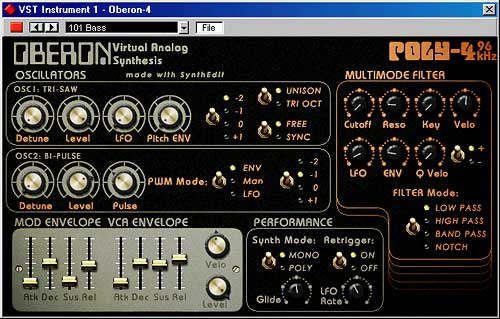
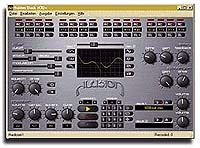
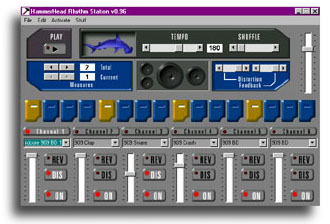
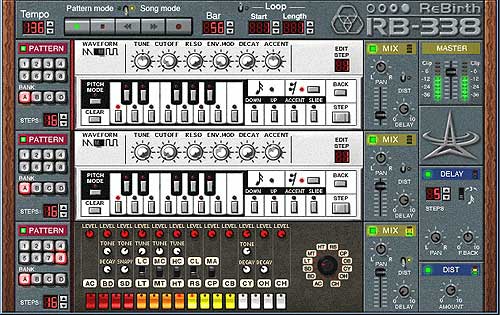
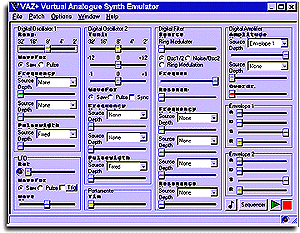
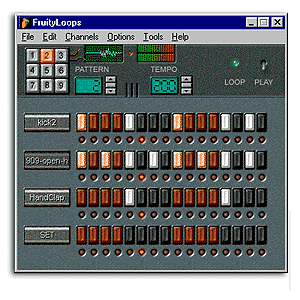
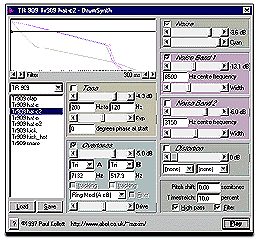
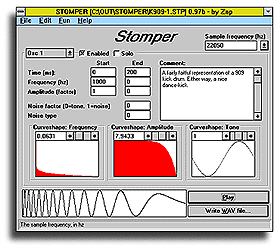
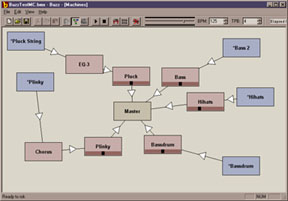
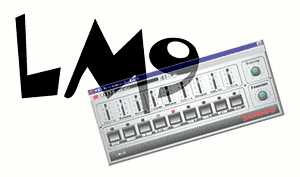

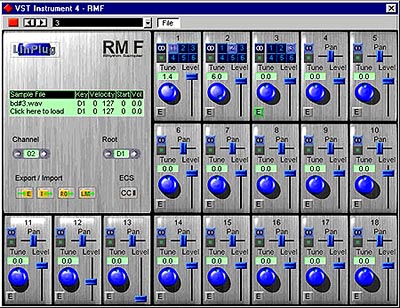
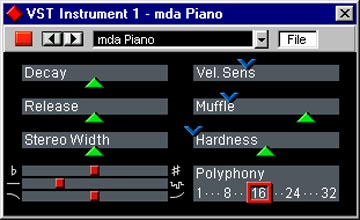
0 comments
Add review/comment